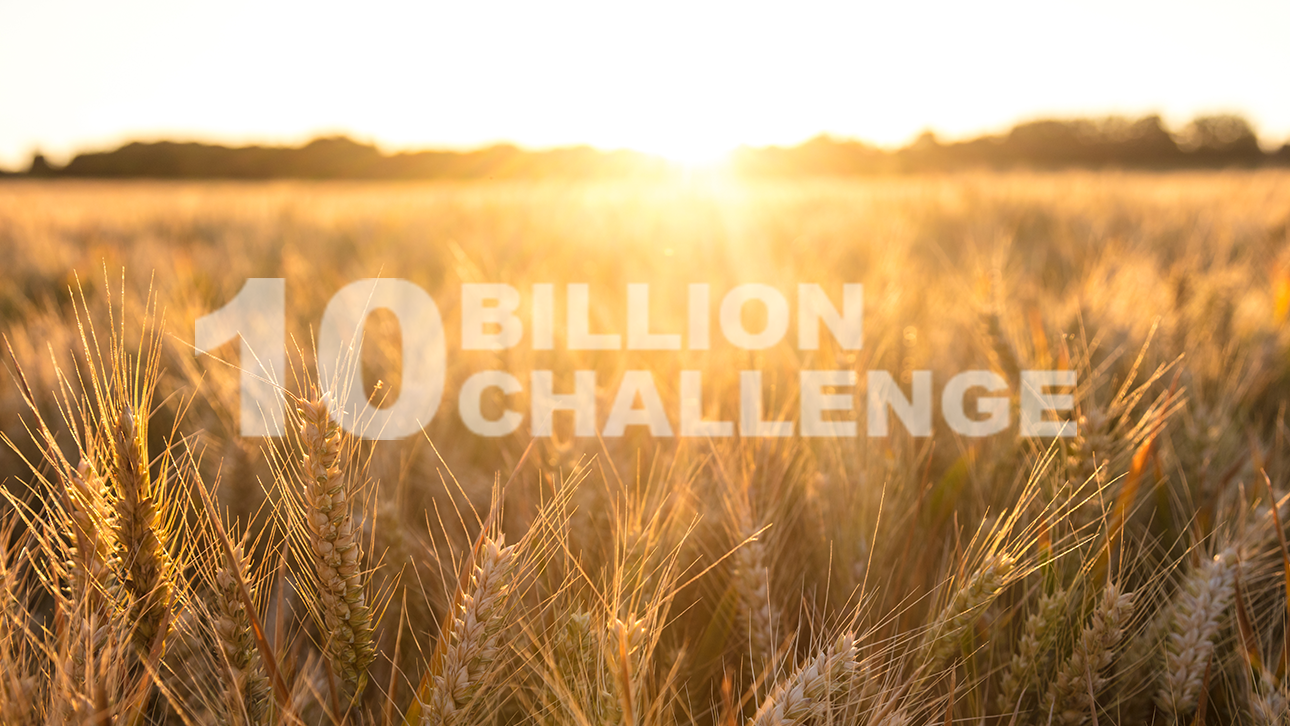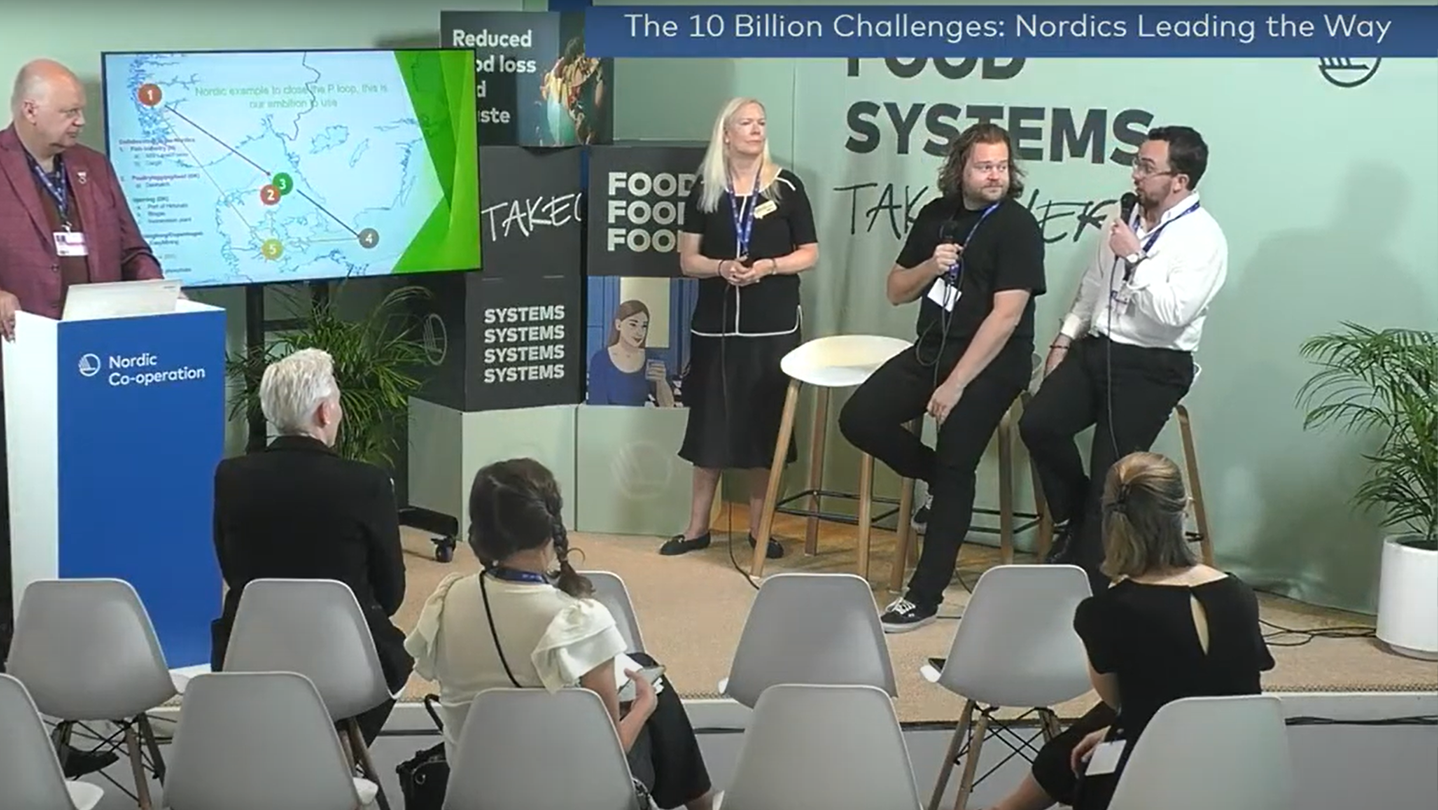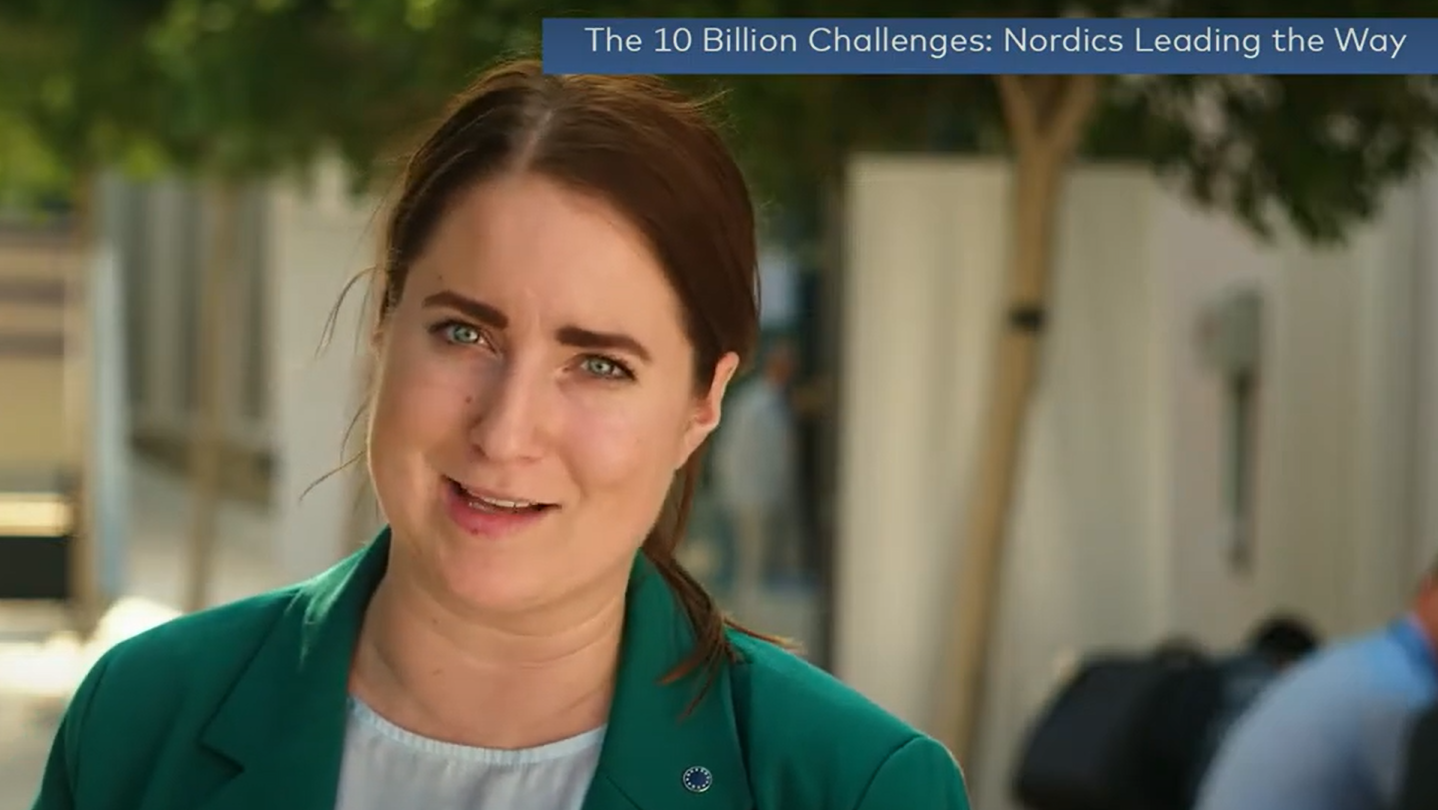
Can Nordic innovations help feed 10 billion people?
A seminar at the UN’s most recent climate conference highlighted how waste-based circular solutions being developed in countries like Sweden and Norway could be critical for global food security when the world’s population reaches projected levels.
10 Apr 2024Discussions on maintaining and boosting food production within planetary boundaries were at the core of the Food Systems Takeover seminar series at COP28 in Dubai, the 2023 edition of the United Nations’s annual gatherings for addressing climate change. The first of the seminars hosted at the Nordic Pavilion on December 10, “The 10 Billion Challenge: Nordics Leading the Way,” was especially focused on sustainably meeting the needs of a growing global population with unique circular solutions.
Taking its name from the 10 billion people that will be living on the planet by 2050, the seminar – which was moderated by Pär Larshans, Chief Sustainability Officer at Ragn-Sells – stressed the need for harnessing waste as a source of nutrients necessary for agriculture.
An essential resource for food production
The seminar also underscored that since 70% of the future population will likely live in vast urban areas or megacities, there are unique opportunities for turning the burden of waste treatment needed for dense populations into an advantage.
Phosphorus, for example, is a key ingredient in fertilisers and animal feed. While its current main source is phosphate mined from the ground, phosphorus is also heavily prevalent in wastewater. Groundbreaking new technology, like the Ash2Phos process from the Ragn-Sells Swedish-based subsidiary EasyMining, can recover that phosphorus without contaminants. Wide-scale implementation of the technology would transform the wastewater of dense population centres into an invaluable resource, but also sustainably provide an essential component in food production – making the overall process more circular and lowering its carbon footprint.
Joining “The 10 Billion Challenge” in his role as the Director-General of the Curt Bergfors Foundation and jury co-chair of its Food Planet Prize, the renowned Michelin Star chef Magnus Nilsson explained such innovations related to food production are critical for a greener future.
– The way we eat today is also what taxes our environment the most. And we can't choose to stop eating, right? I think what we can do to support development like this is to continue putting the spotlight on the most cutting edge and most innovative solutions out there that are still not known, he said.

Sustainably produced ‘blue food’
A key point of “The 10 Billion Challenge” was that wastewater isn’t the only untapped reservoir for reclaiming resources. The seminar featured a video presentation detailing a project in Norway, in which Ragn-Sells is a partner, that’s developing infrastructure to turn the detritus of the country’s fish farming industry into something useful.
Waste sludge from aquaculture, made up of fish faeces and feed residue, is not only perfect for extracting phosphorus but also methane for biogas energy. What’s more, the presence of both compounds in Earth’s environment already exceed planetary boundaries. So removing them as a part of a circular economy would help mitigate damage and restore ocean ecosystems.
According to Anna Lindstedt, the Ambassador for the Ocean at the Swedish Ministry of Foreign Affairs and one of the seminar’s panellists, this approach to blue food – food harvested from aquatic environments – is critical to preventing famine and helping the planet.
– Sustainably produced blue food is part of the solution…with many co-benefits to fight the triple crisis of pollution, biodiversity loss, and climate. So it's really a no-brainer. And also, for resource efficiency purposes… we need to diversify value chains and work through the value chains in order to reach a truly long-term sustainable society and planet in all its aspects, she explained.
Legal barriers to circular innovations
However, while Nordic innovations in waste-based circular solutions have serious potential, the seminar noted many are legally blocked from full development and implementation. For example, even though phosphorus extracted through Ash2Phos has been proven to be suitable for both fertilisers and animal feed, current EU regulations focus on the nutrient‘s origin from waste instead of quality and limit its use to certain types of fertiliser.
Emma Wiesner, a member of European parliament, who spoke at the seminar through pre-recorded comments explained how current laws and rules reflect an older mindset when it comes to resources, production, and waste.
– It's indeed a shame that we still have legal barriers, she said. We see many pieces of regulation that are adjusted to a linear perspective and not a circular one.

Emma Wiesner, member of European parliament.
Yet, Wiesner seemed hopeful that as the cutting-edge approaches to utilising waste as a resource gain awareness outside the Nordic region, they’ll inspire new legislation.
– These projects are role model projects. I think we, as policymakers in the European Union, must scrutinise ourselves, look at all the costs and revenue streams of these activities, and see how we can facilitate from a cost point of view and also legal point of view, she explained.